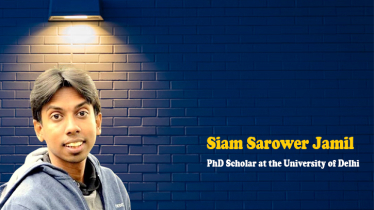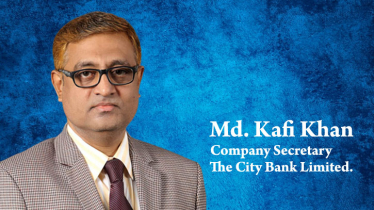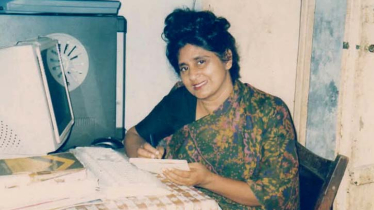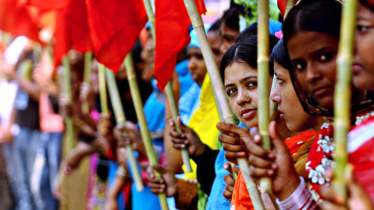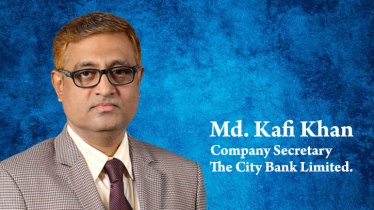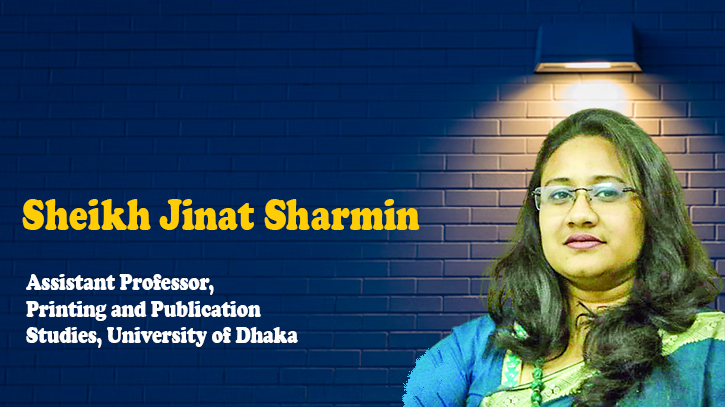
Photo : Messenger
The invention of Johannes Gutenberg’s movable types in the 15th century in Germany can be marked as one of the powerful technologies that changed the history of civilization and brought a revolution to the world. Besides books, commercial printing has also become a huge sector of printing industry. One of the most vital aspects of commercial printing is the flexible packaging industry.
Flexible packaging has become one of the vast areas of commercial printing across the world. Bangladesh is a huge country in terms of its population and considered as one of the fastest growing economies in the world, and second largest economy in South Asia. Though agriculture is a major sector of Bangladesh economy, industrialization and export have remarkably become the strong areas. The annual investment of the printing industry is around taka 15000 crore with a profit of 15% in Bangladesh. Covering the demand of the local market, printing goods and materials worth tk160 crore are exported annually with a growth of 10% each year. Among the vast areas of printing industry, flexible packaging covers a market of taka 6000 crore with a tremendous annual growth of 20% and the hike is expected to run in future too.
The basic concept of packaging begins from containing goods. However, the concept is no longer limited to containing. Packaging is a systematic process to contain, preserve, transport and market goods. History says that the ‘marketing purpose’ was added in packaging after the printing technology spread worldwide. The growth of packaging industry became drastically faster as a consequence of the Industrial Revolution. Firstly, the lifestyle of people changed due to the Industrial Revolution which directly made an impact on urbanization. With the changed attitude of people towards depending on packaged goods in urban life, the marketers shifted their focus more on packaging style and variation. Secondly, consumers started paying attention to packaging while making purchasing choice. And thirdly, the free market economy and competitive market played a role to fulfil the urge of marketers to promote their goods through packaging. Moreover, technological advancements and creative designs made the packaging industry a vital area of printing.
Depending on the structure and the packaging materials there can be both flexible and rigid packaging. Flexible packaging means that the material used for packaging is somehow not fixed with a particular shape or format, rather than it’s flexible in nature and structure. For different commodities including agricultural, dairy, ready food, beverage, medicine, care products, garments etc. flexible packaging has become popular for its different benefits including low cost, less time, long preservation, customized size and design and so on. As the flexible packaging industry depends on ‘business to business’ work patterns, the industrial development in every sector also helps the flexible packaging industry to grow. After the Covid-19 pandemic people used to depend on packaged goods, especially foods and agricultural products, more than before due to maintain hygiene and safety. So, the demand of packaging is on a rise proportionally.
There are more than hundreds companies working in flexible packaging sector though the lion's share is under a very few companies. The mostly used materials for flexible packaging are aluminum foils, papers and majorly different polymers.
According to the data of Bangladesh Flexible Packaging Industries Association, 20% of the packaging materials are locally produced where the industry depends on imported materials for the rest. Among the imported packaging materials mostly comes from China. Korea, Singapore, Thailand and some countries from Europe are also in this list.
In recent time, some big companies of Bangladesh are investing on flexible packaging and ensuring their consumers’ product packaging by themselves rather depending on third parties. Besides, some prominent international packaging companies also on a progress to build their plants in Bangladesh. These initiatives indicate that the flexible packaging industry has a long way to go in near future. Bangladesh with its low labour cost produces huge quantity of package which can fulfill the demand of local market and open a window to export. As we see, the textile industry of Bangladesh is a major area of export, the garments can’t be exported bare, they need proper packaging. So, with the export of garment products there is a huge amount of flexible packaging that adds value not only to the packaging industry but also to the national economy.
There is one concern which is crucial and unavoidable, and its environment. With the huge production of flexible packaging there is a huge amount of waste generating in our environment. As the materials of flexible packaging is mostly polymers and those are used for once, those are polluting the environment. Some of the packaging materials are recyclable but there is not enough initiative to recycle. Some ecofriendly packaging materials have been invented and introduced to the industry, like the biodegradable polythene from jute by Bangladeshi scientist Mubarak Khan, but in proportion with the industry demand the supply is very less. Bangladesh government has allotted taka 100 crore in this jute polythene project. If the production growth of such materials increase, that will be a blessing not only to the industry but also to the environment.
Another important issue is health. The use of ink in packaging materials has some side effects on health too. Especially food products with bright colorful packaging convince the customer to buy the product but the ink that contains toluene is hazardous to health. Some companies produce toluene-free ink which can be used for food packaging. However, the price and availability do not meet the demand of the packaging companies. So again, there need to be regulation and its’ application to ensure the health safety and the growth of the industry.
We are living in a world where food security is going to be a big challenge. Flexible packaging has a great role in preserving food and minimizing the perishable products. As an industry flexible packaging can contribute to food security by giving a long life to the foods and by maintaining hygiene it can contribute to health safety too. It is high time we need to realize the growth and future prospects of the flexible packaging industry and plan accordingly by setting proper guidelines, rules and regulations. As a nation we should have a vision about the growth of our industry, our health and our environment.
The writer is an Assistant Professor, Printing and Publication Studies, University of Dhaka. Email: [email protected]
Messenger/Fameema


